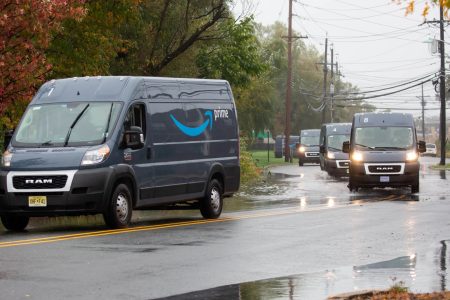Customers have come to expect when they order something online, it arrives in two days or less. But with increasing adverse weather events like Houston’s heatwaves, Florida’s hurricanes and other extreme storms, it’s getting harder to ensure fast delivery.
Many logistics companies have warned about shipping delays due to extreme weather. Weather-related supply chain disruptions will cost the industry an estimated $100 billion in 2024, according to Freight Waves. Freight solutions company Breakthrough, which focuses on sustainable transportation, conducted a survey of 500 shippers and carriers this year that revealed extreme weather was cited as the top transportation challenge.
“Shippers and carriers continue to face a myriad of disruptions,” Breakthrough chief operating officer Jenny Zanden said in a statement. “Last year, transportation professionals were focused on reducing costs as a means to overcome volatile diesel prices. This year, sustainability and climate-related disruptions are driving the need for fuel efficiency and changes to transportation strategy.”
The issues are affecting key global transportation conduits, such as the Panama Canal, where drought conditions have plagued shippers. But the issues are also increasing for the biggest retailers in the U.S. as they attempt to get delivered to customers and keep warehouses and stores stocked.
In March, an expected snowstorm hit the Sparks, Nevada. It led to the closure of Donner Pass, which many drivers use to traverse the northern Sierra mountain range. Walmart was unable to dispatch its grocery delivery from its Sparks center as a result. It turned to to predictive analytics and artificial intelligence to optimize last-mile strategies.
“We have now this technology at our hand, which allows us to make sure that we continue to serve those customers in the best possible way, run those scenarios, and have those recommendations ready so that we can start taking actions in a much quicker way, rather than waiting for the event to happen and then reacting,” said Walmart senior vice president Parvez Musani.
Walmart used its simulation platform built with artificial intelligence to create a digital twin of its entire network. Predictive modeling allows the company to see how to react to an adverse weather event, including if there are stores or warehouses in the weather path that need to be shut down and where those orders can be fulfilled. In the Sparks storm, Walmart identified 85 stores spread across Nevada, California and Oregon that could be quickly realigned to address the deliveries coming from the Sparks center. The system was able to find four specific distribution centers that could handle the workload, as well as offer alternate driving routes to get items to customers.
“Our goal is that by using technology and AI, we make it seamless for our customers where they don’t see the impact of some of this unforeseen event that happened, and we continue to serve the customers in…
Read More: Two-day shipping Americans now expect faces a climate change threat

